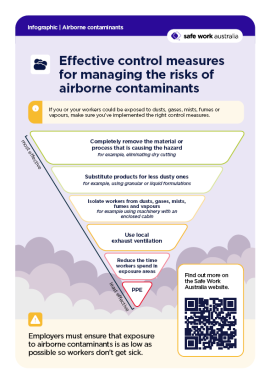
Downloads
Australia is transitioning to the Workplace exposure limits for airborne contaminants (WEL list). Until 1 December 2026, you must still comply with the Workplace exposure standards for airborne contaminants (WES list). Contact your work health and safety regulator for further information.
Infographic content:
Effective control measures for managing the risks of airborne contaminants.
If you or your workers could be exposed to dusts, gases, mists, fumes or vapours, make sure you’ve implemented the right control measures.
The below list is ordered from most effective control measure to the least effective.
- Completely remove the material or process that is causing the hazard
for example, eliminating dry cutting - Substitute products for less dusty ones
for example, using granular or liquid formulations - Isolate workers from dusts, gases, mists, fumes and vapours
for example using machinery with an enclosed cabin - Use local exhaust ventilation
- Reduce the time workers spend in exposure areas
- Personal protective equipment
Employers must ensure that exposure to airborne contaminants is as low as possible so workers don’t get sick.
Additional Resources:
Publication Date:
Last updated:
Publication type:
